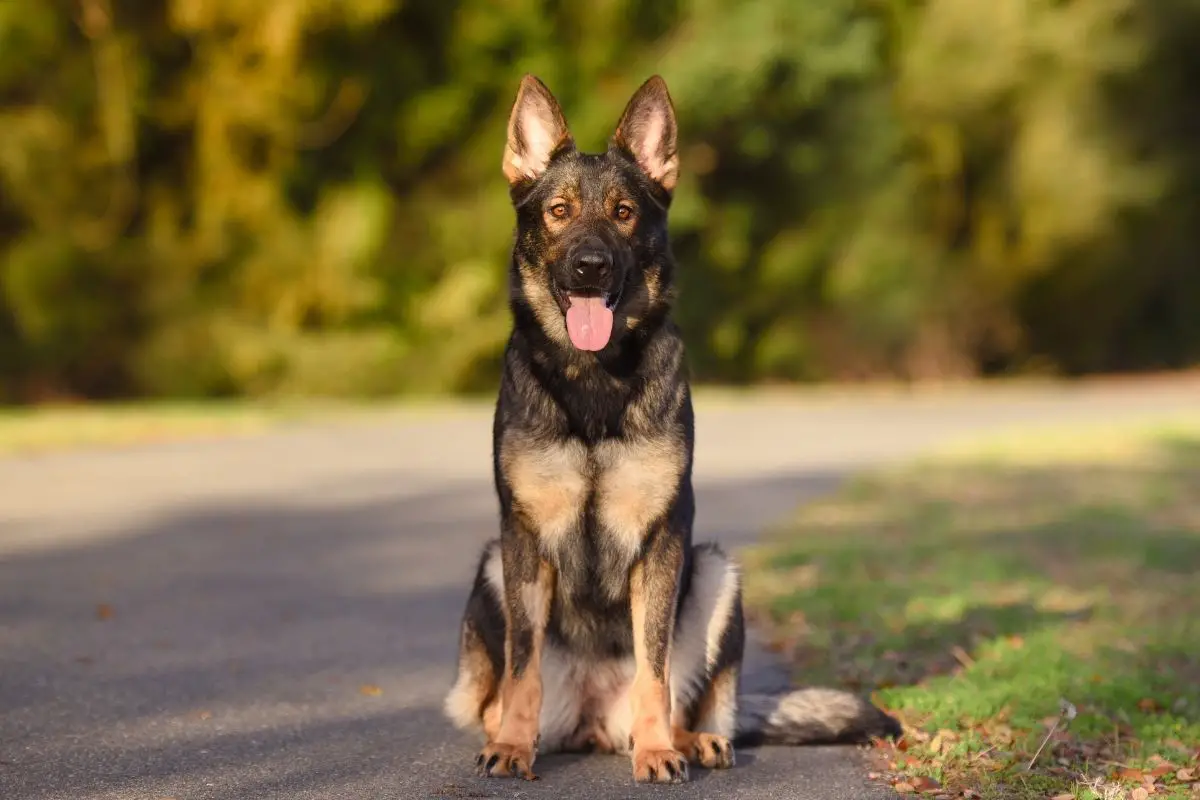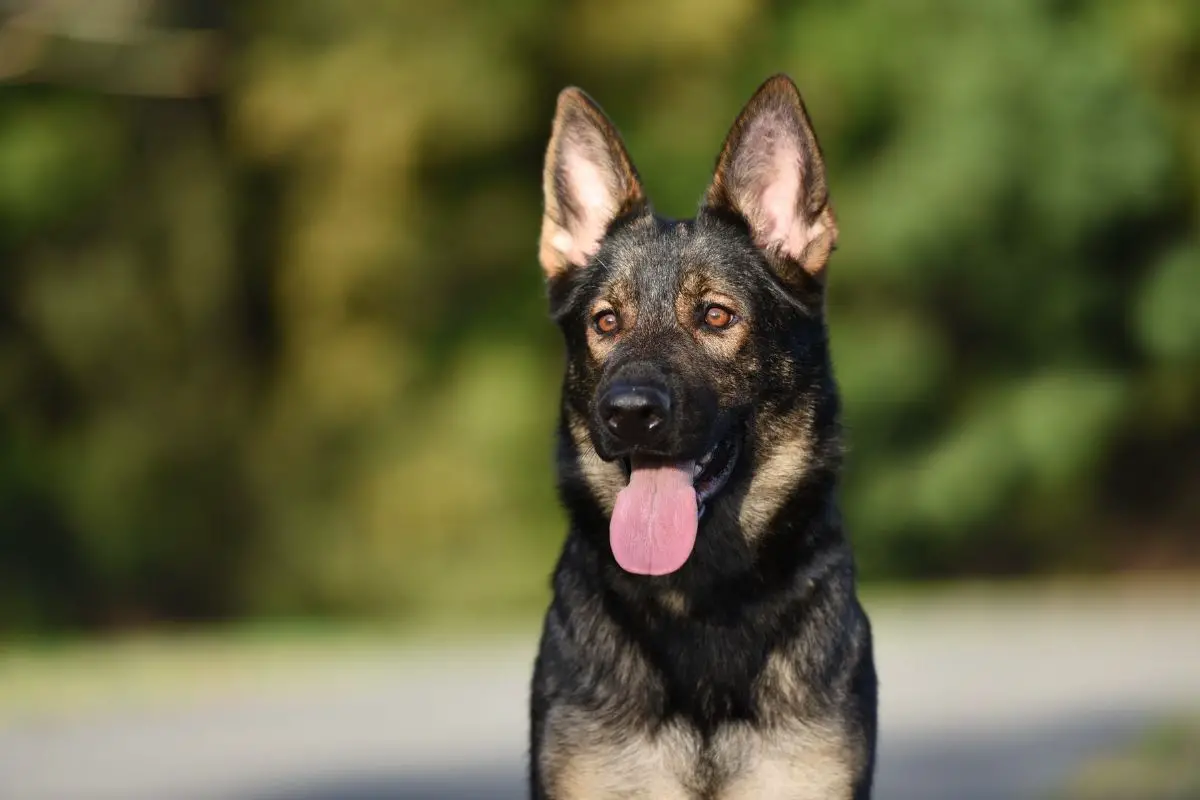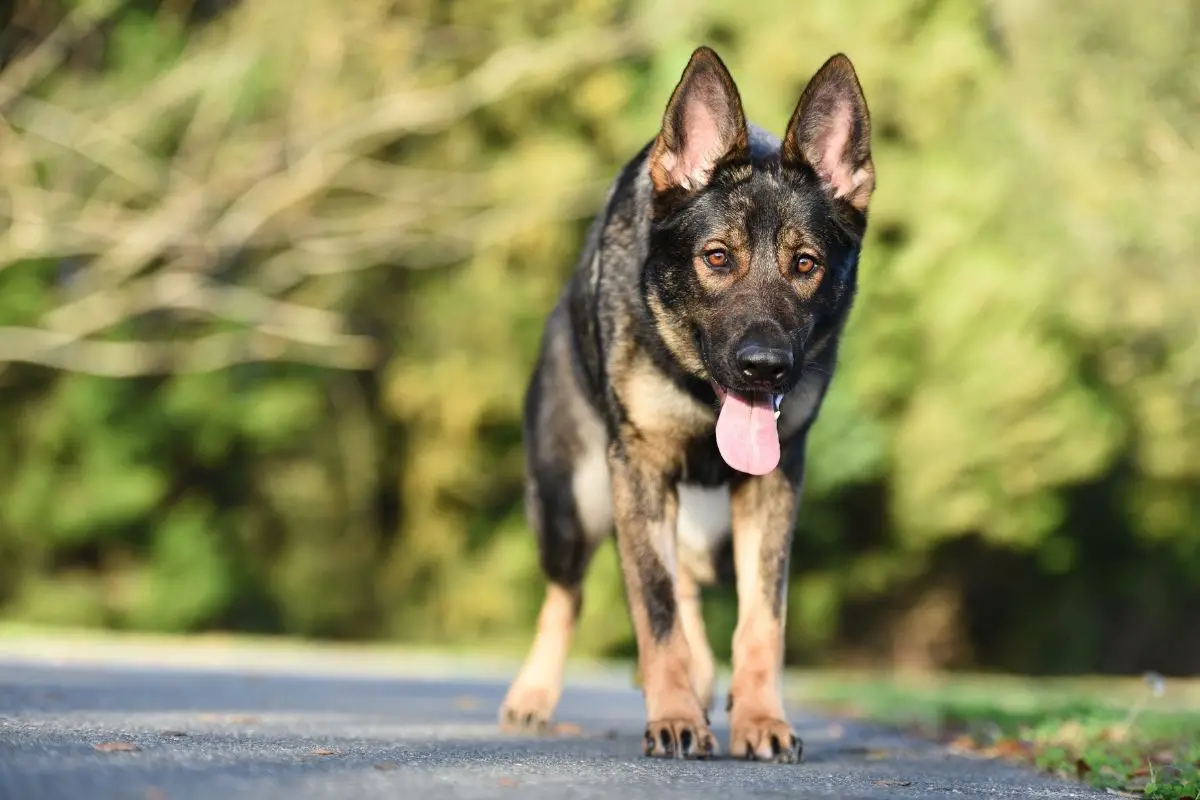Now, for those of you who don’t already know, the sable German shepherd is NOT a crossbreed.
Rather, it’s a very specific variation within the breed. And in this article, we’re going to tell you all about it.
This is especially important if you’re thinking of adopting one as a family pet.
In this article, we’ll be covering the following:
- What exactly is a Sable German Shepherd? Is the Sable German Shepherd a purebred?
- How Rare is the Sable German Shepherd?
- What Are The Genetic Factors That Contribute to the Sable German Shepherd Coat?
- The Genetics Behind Breeding Sable Coloring
- Typical Attributes of the Sable German Shepherd
(Please feel free to scroll ahead to any section that catches your attention.)
Here goes!
Contents
What Exactly Is A Sable German Shepherd?
We did mention this in our introduction, but it bears repeating here. A sable German shepherd dog is basically a special kind of German Shepherd with a very distinctive coat.
It has been around since the mid-1800s and was originally bred by a German breeder named Johann Georg Hundhausen.
He began breeding his dogs on a farm near Munich, Germany, and eventually started selling them at various shows throughout Europe. And they have since come to be bred in the United States.
It’s important to note that the sable German shepherd dog is NOT actually a crossbreed with one German shepherd parent and another parent from another breed.
Instead, the parents of a Sable German Shepherd are always both German shepherds.
As such, Sable German Shepherds have all the great characteristics that you know, love, and come to expect from a purebred German Shepherd.
This includes their outstanding intelligence, train-ability, and unflinching loyalty to their loved ones and owners.
Their Distinctive Fur Coat
But what distinguishes the Sable German Shepherd from the regular German Shepherds is their beautiful fur coat.
It has a very distinctive coloring, featuring a black color at the very tips, alongside a lighter color at the base.
In some instances, the lighter color is a red or tan, but in others it can be a nice gray or silver.
This gives the Sable German Shepherd a stunning ombre effect that can look different from every angle. It’s quite something to watch as the dog moves around as they run around, work or play.
This sable coat, interestingly, is actually the original shade of the German shepherd breed, with the founding member of the breed expressing this exact ombre pattern.
And today it’s particularly associated with the working line German shepherds, which is why it often seems like quite an uncommon color. Which leads us nicely onto our next section.
How Rare Is The Sable German Shepherd?

Despite being seen by many as a very special German shepherd, the Sable German Shepherd isn’t really particularly rare, and they are actually quite easy to come by.
This is because, as we will be discussing in more depth a little later, you only really need one Sable German Shepherd parent to produce a litter where 50% of the puppies are sable ones.
So, it’s not very rare at all, and many German Shepherd household pets and those who work in commercial settings are often Sable German Shepherds.
What Are The Genetic Factors That Contribute To The Sable German Shepherd Coat?
There are two pigments with dogs that affect the color of their coats. These are pheomelanin and eumelanin.
The pheomelanin is responsible for producing red pigments in a dog’s fur, such as red or tan. You can see this effect in a wide range of dogs, from Irish Setters through to Golden Retrievers.
Meanwhile, eumelanin brings out black coloring in a dog’s fur. But this black pigment can “dilute” into other colors, such as gray, silver, and a kind of blue.
Now, Sable German Shepherds have both pheomelanin and eumelanin in their systems.
However, Sable German Shepherds also produce a protein called agouti, which serves to manipulate how these pigments are released in each and every strand of hair.
In Sable German Shepherds, the agouti works by releasing eumelanin to give the hair strands their black tips, but then switches to allowing pheomelanin to color the remainder of each strand of hair.
The Genetics Behind Breeding Sable Coloring
You may be interested to know that Sable German Shepherds aren’t only produced by other Sable German Shepherds, but they can also be produced by German Shepherds that are black, two-color, or black and tan.
There only has to be one sable parent, not two, as you may have thought.
To explain why that is, I’m going to talk a little about genetics, but don’t worry, this should be quite easy to follow. Here are some quick definitions you need to know:
- Dominant and recessive genes – When a puppy is conceived, it receives one gene from each parent for every feature. The one that overpowers the other one is called the dominant gene, and the one that is overpowered is the recessive gene.
- Homozygous – A homozygous parent is one where the parent has two of the same genes for a particular feature. For example, the gene for sable fur is a dominant gene, and a homozygous parent may have either two genes for sable fur or two genes that don’t allow for sable fur.
- Heterozygous – A heterozygous parent is one which (in this scenario) has one gene for sable fur, and one gene that does not produce sable fur. In this case, sable colored fur will be produced, because it is a dominant gene, and will “overpower” the recessive gene.
So, let’s get down to the nitty-gritty…
When the two parents are homozygous and have two dominant sable genes each, the chance of producing only sable German shepherds is 100%.
If, however, only one of the parents is homozygous with two dominant sable genes, and the other parent is heterozygous with just one dominant sable gene and one recessive gene, then the puppy will receive at least one sable dominant gene from the homozygous parent, with a 50/50 chance of getting a dominant sable gene from the other heterozygous parent…
Either way, regardless of what gene it receives from the heterozygous parent, the puppy will receive at least one dominant sable gene from the homozygous parent, and because the dominant gene always overpowers recessive ones, this puppy will be sable colored no matter what.
If, however, both parents are heterozygous for the sable gene, it’s an entirely different story. The puppy could receive either genes from each parent…
This means that there’s a 25% chance they could get the dominant sable from each parent, and a 25% that they get the recessive gene from each parent, and a 50% chance that they get one dominant and one recessive gene from their parents.
And because the sable gene is dominant, this means that 75% of the litter will have sable fur. Still with me?
It is also possible for a heterozygous parent to mate with another German shepherd who is not sable, and does not have the dominant sable gene, and instead has two recessive genes for sable fur, and they could still produce a sable puppy.
The stats for this are as follows. There’s a 50% chance of a dominant sable gene pairing with a recessive gene, which means that 50% of the litter will be sable.
Similarly, there’s a 50% chance of the recessive genes pairing up from each parent, to produce puppies that do not have sable fur.
In conclusion, if you wish to breed Sable German Shepherds, you may only need one German shepherd parent with sable fur, but you increase your chances of producing Sable German Shepherds if both parents have sable fur, and your chances are even better when at least one of the parents is homozygous, with two dominant genes for sable fur.
Unfortunately, the only way to know exactly what combination of these genes a German shepherd is carrying is through genetic testing.
Typical Attributes Of The Sable German Shepherd

Sable German shepherds come from the working line of German shepherds, and as such they are more athletic, have straighter backs, and are less prone to bone and joint problems such as dysplasia of the hips or elbows.
They also generally have more energy and more confidence than their counterparts, and as such they may require firmer leadership.
Other than that, their care requirements are the same as that for any other German shepherd.
Wrap Up
I hope you were able to follow our explanation of how sable German shepherds, despite being a purebred German shepherd, only require one of their parents to have sable fur in order to have a stunning ombre, sable, fur coat.
We should count ourselves lucky that such animals are so commonly found and so easy to breed and look after.
And now that you (hopefully) understand the genetics behind it all, you could go right ahead and breed some sable German shepherds yourself.
Sable German shepherds are excellent dogs in more ways than just their stunning ombre coats, and anyone would be lucky to have one in their life.



